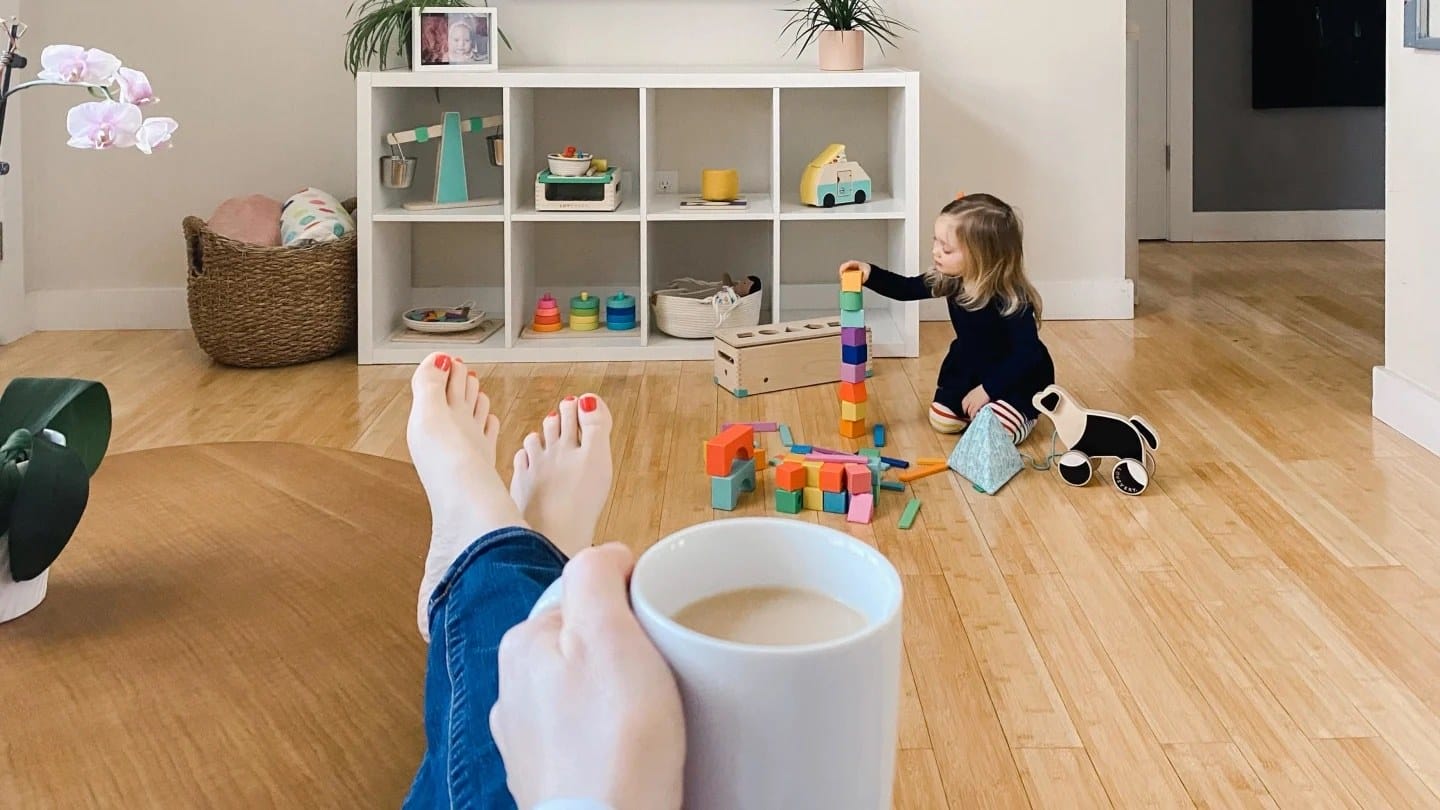Why teaching your kids independent play is actually self-care

Lovevery's cofounder assures you that letting your kids play without you is healthy for you both.
Table of Contents
- I did some research, and it turns out that letting children play on their own is not only good for them, it's also good for their parents—in fact, it's an act of self care.
- For babies who are not yet crawling:
- For older babies and toddlers:
- For preschoolers:
- The Enthusiast Kit
- The Helper Kit
- The Block Set
You know the post on Instagram : a hand holding a cup of coffee in the front of the frame, a delighted (very) small child in the background happily absorbed with a toy all on their own. It isn’t one of those flashing light toys either; it’s something developmental, made out of wood, Montessori-ish . How is she doing that? Her child looks happy and engaged, and she isn’t even working at it?! As the cofounder and CEO of Lovevery , of course I’m happy to see our products in the background of these posts. But what really gets my attention is how different this scene is from how I was raising my three kids prior to COVID-19. I spent a lot of time engaged in my children’s play: I was on the floor with them, narrating, nerding out, and maximizing every learning opportunity I could. At first, it felt like intentional parenting, but by the 7th Lego battle, it started to feel like a burden . This last year has shown me it’s time to encourage my children to enjoy more independent play.
I did some research, and it turns out that letting children play on their own is not only good for them, it’s also good for their parents—in fact, it’s an act of self care.
Here’s the reality: constantly being “on” is exhausting, and I’ve learned it’s not even necessarily good for children. Someone decided a while back that being a good parent means constant interaction and total self-sacrifice, but it really doesn’t. Learning to play independently is developmentally important for a young child. Experts all agree that independent play helps support problem solving, creative thinking, and focus. Even babies benefit from short periods of independent play. Of course, there is only so much you can do for yourself while your children are playing nearby, and encouraging independent play is going to mean different things at different stages. If you’re consistent, you can gradually build towards longer sessions. When your baby is tiny, you may only have long enough to sort through the mail for a minute or two while your baby looks at high contrast images overhead in their Play Gym . Older babies who are sitting up might be able to entertain themselves long enough for you to get most of the way through a cup of tea. Eventually, around preschool age, you can establish a specified time when your child might play in their room or another safe area with some monitoring. At this stage, you might have time for a phone call with a friend. Even if your child can’t play independently for very long at first, just removing the pressure to constantly engage is an act of self care. Developing independent play habits is a process. Here are some tips:
For babies who are not yet crawling:
- Put your baby in a safe, baby-proof space like a Play Gym and plan to stay nearby.
- At first, expect no more than 5 minutes of independent play at a time.
- If they fuss or cry, go to them; you can build up their stamina over time.
- Try making independent play practice part of your baby’s daily routine. For example: nap, milk, read a book together, then independent play.
For older babies and toddlers:
- Babyproof an area where your child has a boundary (a room, space with gates, etc) where you can watch them through a monitor, but they can’t see you. Temporarily putting a baby gate on your child’s bedroom works well if the room is safe (fire safety reminder: don’t leave the gate up at night).
- Offer a few meaningful choices for toys using the Montessori method of toy rotation . Fewer toys encourage children to go deeper with their play.
- Give your child playthings and activities that are just right for their stage to increase the likelihood that they will stick with the toys longer.
- Reserve a special snack or drink just for independent playtime.
- Keep expectations realistic and start with a few minutes at a time, building up to 20 or 30 minutes each day.
- Note that certain times of day—like just before your child’s nap—may not be the best time to try.
For preschoolers:
- Instead of nap-time, offer 45 minutes of quiet time.
- Try setting up simple stations with three or four activities such as a puzzle, coloring, beading, and blocks ; your child can rotate between them.
- A fresh pile of library books in a cozy space work great too—your child may want to “read” on their own
- Avoid screens, which can get in the way of your child’s focus and reduce the amount of time they can entertain themselves.





































